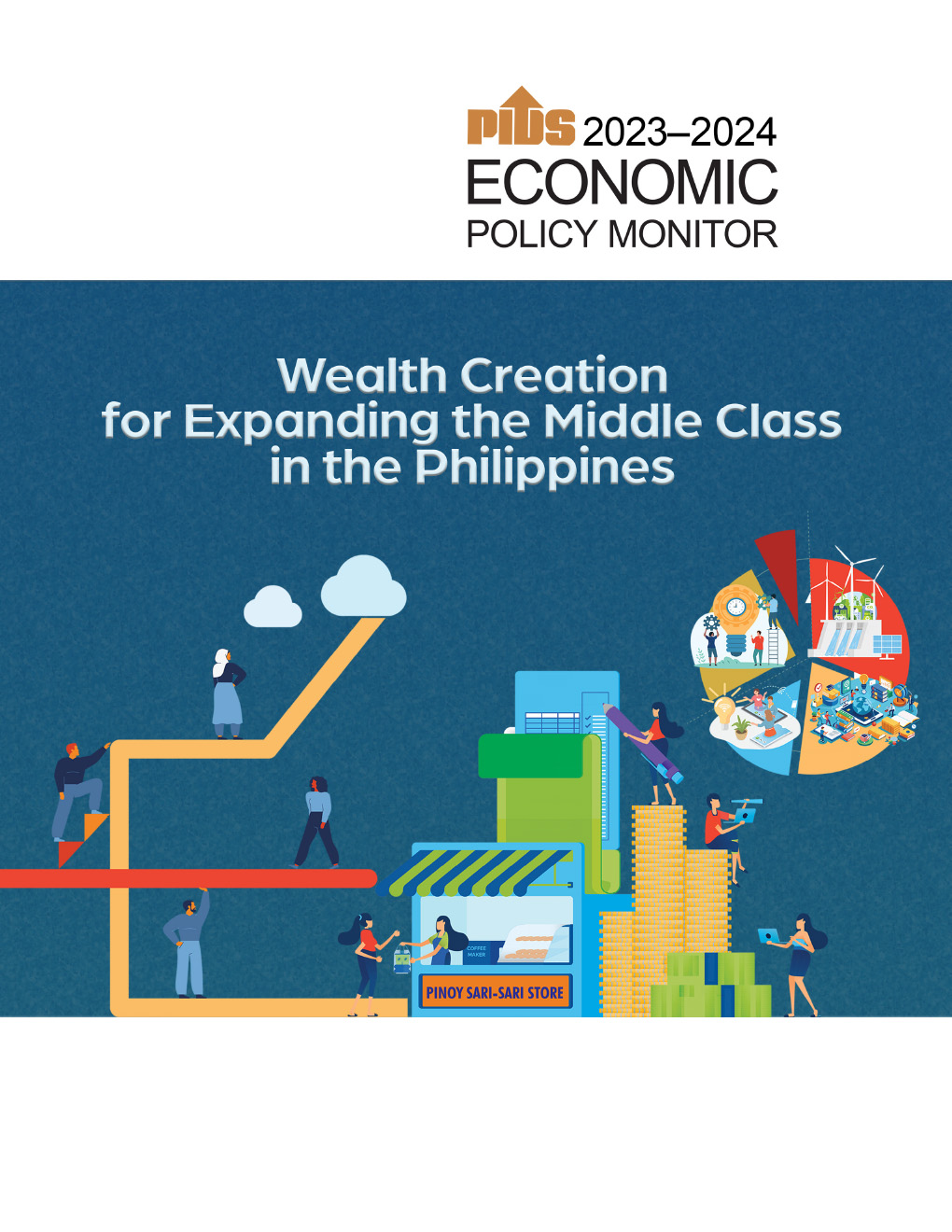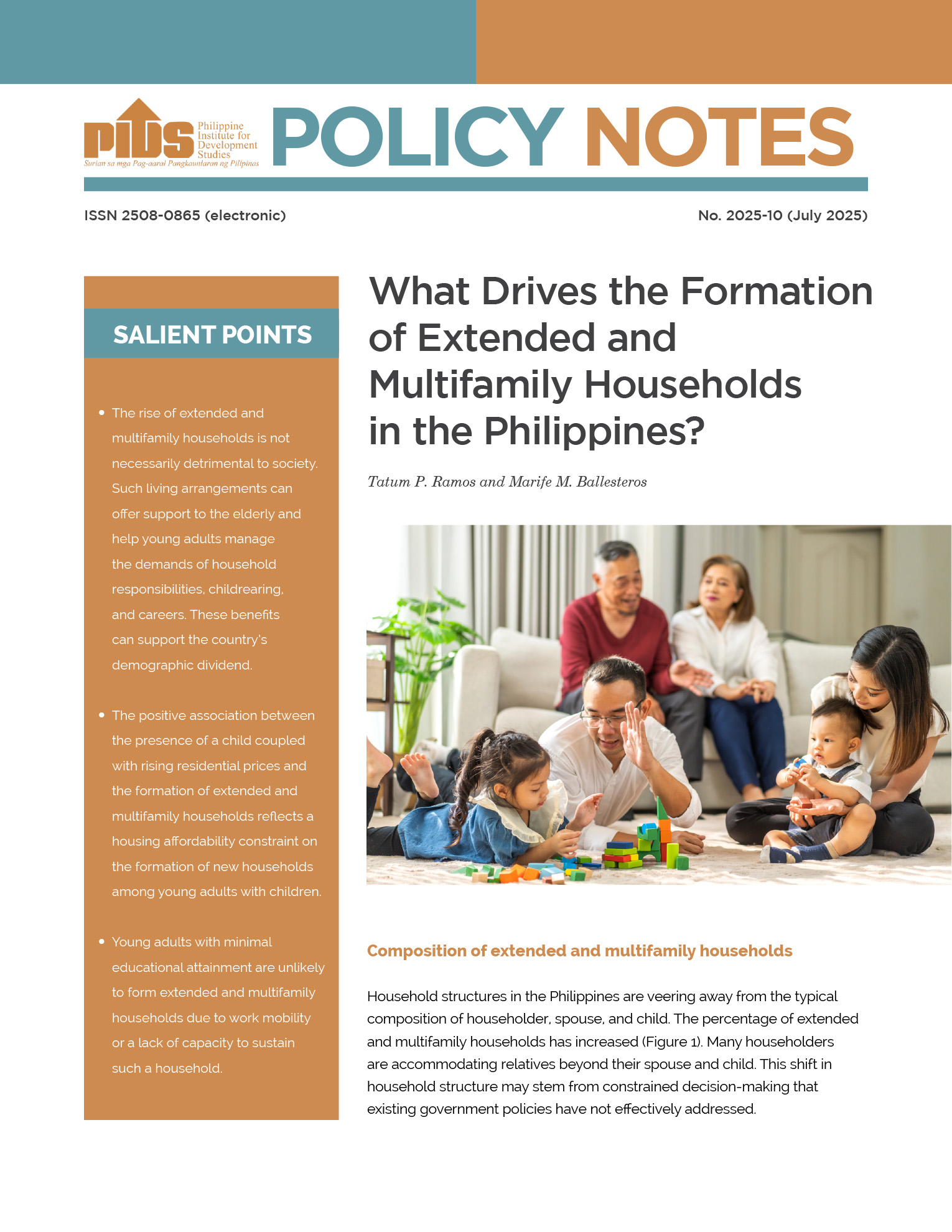Poverty incidence among population rose from 24.9 percent in 2003 to 26.4 percent in 2006 and then inched up further to 26.5 percent in 2009. Although this aggregate poverty rate shows only a few percentage points change from 2003 to 2009, this does not mean there are no movements in and out of poverty. Based on a matched panel data obtained from three survey years of the Family Income and Expenditure Survey, this paper aims to look into the dynamics of poverty. The main objective is to draw a line between the chronic and transient poor, and to determine the factors that have made people exit poverty and those that dragged many nonpoor households into poverty.
Citations
This publication has been cited 14 times
- Ducanes, Geoffrey, and Edita Abella Tan. 2014. Who are poor and do they remain poor?. UP School of Economics Discussion Papers 2014-08. Diliman, Quezon City: University of the Philippines School of Economics.
- Mapa, Dennis S., Michael Daniel Lucagbo, and Heavenly Joy Garcia. 2012. The link between agricultural output and the states of poverty in the Philippines: Evidence from self-rated poverty data. Philippine Review of Economics, 49, no. 2, 51-74. University of the Philippines School of Economics and Philippine Economic Society.
- Mapa, Dennis, Michael Lucagbo, and Heavenly Joy Garcia. 2012. The link between agricultural output and the states of poverty in the Philippines: Evidence from self-rated poverty data. MPRA Paper 40791. University Library of Munich, Germany.
- Mapa, Dennis, Michael Lucagbo, and Heavenly Joy Garcia. 2012. The link between agricultural output and the states of poverty in the Philippines: Evidence from self-rated poverty data. MPRA Paper 40791. University Library of Munich, Germany.
- Martinez, Arturo Jr. 2016. Analytical tools for measuring poverty dynamics: An application using panel data in the Philippines. Working Papers id:10550. eSocialSciences.
- Martinez, Arturo Jr. 2016. Analytical tools for measuring poverty dynamics: An application using panel data in the Philippines. ADB Economics Working Paper Series 477. Mandaluyong City, Philippines: Asian Development Bank..
- Martinez, Arturo Jr. et.al. 2014. Is there income mobility in the Philippines?. Asian-Pacific Economic Literature 28(1), 96-115. Asia Pacific School of Economics and Government, The Australian National University.
- Mina, Christian D. and Katsushi S. Imai. 2015. Estimation of vulnerability to poverty using a multilevel longitudinal model: Evidence from the Philippines. Discussion Paper Series DP2015-16. Research Institute for Economics & Business Administration, Kobe University.
- Mina, Christian D. and Katsushi S. Imai. 2016. Estimation of vulnerability to poverty using a multilevel longitudinal model: Evidence from the Philippines. Discussion Papers DP 2016-10 (Revised). Philippine Institute for Development Studies.
- Minam Christian D. and Katsushi S. Imai. 2017. Estimation of vulnerability to poverty using a multilevel longitudinal model: Evidence from the Philippines. Journal of Development Studies, 53, no. 12, 2118-2144. Taylor & Francis Journals.
- Reyes, Celia M., et.al. 2015. Promoting inclusive growth through the 4Ps. Research Paper Series RPS 2015-01. Philippine Institute for Development Studies.
- Tabuga, Aubrey D., et.al. 2013. Regional integration, inclusive growth, and poverty: Enhancing employment opportunities for the poor. Research Paper Series RPS 2014-01. Philippine Institute for Development Studies.
- Tabuga, Aubrey D., et.al. 2013. Regional integration, inclusive growth, and poverty: Enhancing employment opportunities for the poor. Discussion Papers DP 2013-10. Philippine Institute for Development Studies.
- Tabuga, Aubrey et.al. 2013. Promoting inclusive growth through the 4Ps. Discussion Papers DP 2013-09. Philippine Institute for Development Studies.













